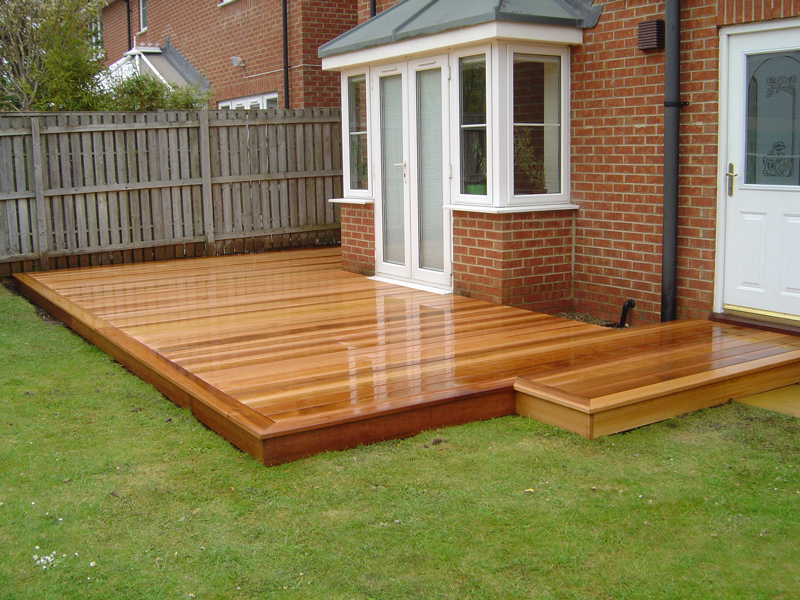It’s vital to stay on top of pest control if you want to get the most out of your garden and decking.
Having a decked area is a popular choice for homeowners to include in their gardens, but without the correct care it has the potential to be home to pests that are looking for shelter and warmth — especially during cold weather. There are more than 100 rodent complaints made every day in London and, although this doesn’t mean that you will be at risk, it’s certainly important to make a few quick preparations to stop any potential pests getting too comfy in your garden.
Check out our tips below for safeguarding your decking from a pest invasion, be it pesky birds, woodworm, rats or mice.
Discourage
First up, you must remove anything that might be attractive to pests. Animals such as rats and mice scout out places before deciding on where to settle down, so be sure to make your decking as uninhabitable as possible.
Make sure you don’t leave any unwanted food debris on your garden furniture and always tie any rubbish and refuse bags, place them inside a bin and keep the lid shut. If you have a get-together on your decking, make sure you thoroughly clear up and clean the decking so that no sauces or dropped food remain which could entice rodents and other critters. Remember; rats, mice and hedgehogs will also eat birdfeed, so make sure to opt for a birdfeeder that isn’t placed on the floor or a table and put it away from your decking.
Keep your hedges and bushes tidy and well-trimmed. Keeping them as far away from your decking as possible will decrease the range of shelter that any potential pests have to take advantage of. Also, make sure any grassy areas are cut regularly. If your main pest problem is birds, movement is a great deterrent. Try hanging something that moves — like a wind chime or wind spinner — to help prevent birds from making a mess on your decking.
Block off
Once you’re satisfied with the tidiness, it might be worth blocking off your decking. Pests won’t be able to make a home under your decked areas if they can’t get in to begin with, so investing in extra materials to create a barrier is worth it.
Beneath your decking is the ideal home for a range of garden pests as it will keep them sheltered from wind and rain. To stop this happening, use wood, mesh or chicken wire and run it along the entire edge of your decking between the boards and the ground. If you’re worried that this will ruin your decking’s aesthetic appeal, you can install a wooden trellis and have the mesh running behind it. Then, arrange potted plants or flowerbeds around your decking to mask the mesh further.
Remember, mice and rats are able to squeeze through even the smallest gaps, so any material you use must be strong, sturdy and well installed.
Sealing
Be aware that any wood decking and furniture you have will be susceptible to woodworm. Unless you have composite decking boards that don’t rot, or plastic decking, it might be worth taking steps to prevent this particularly unpopular garden pest.
Three types of woodworm reside in the UK. The common furniture beetle is normally what people mean when they say ‘woodworm’, but the house longhorn and deathwatch beetles can be far more destructive to your property. Thankfully they are rarer too.
To stop getting woodworm in your outdoor furniture and decking area, it’s important to try to keep your wood dry. This might be difficult for large areas like your decking, but your tables and chairs should be relatively safe under a waterproof cover. Sealing your wood with varnish is a good shout too. This creates a barrier that prevents female wood-boring beetles from laying eggs in the pores of the wood.
But what if happens if it’s too late and your assets are already infested? If you notice small holes across your decking and furnishings — these are usually in a cluster and often about 1mm wide — there could be woodworm present. Although this is treatable, you first need to identify which type of woodworm is doing the damage, so it might be worth seeking professional advice. Common furniture beetle problems can be treated yourself using products that you can buy online. However, if the culprits are house longhorn or deathwatch beetles, you may need to treat by injection.
Trapping
One thing is for sure, pests certainly are persistent. If pests already reside in your outdoor space and require assistance to shift them, it could be worth thinking about using non-lethal traps or scent repellents.
Rodents can’t stand certain scents, including peppermint, garlic and hot spices. Try planting a peppermint tree around the edges of your decking or sprinkle cayenne around potential entry points to deter vermin from nesting. Of course, there are also plenty of commercial rat and mice repellents you can buy that will work to keep pests at bay.
It’s possible to pest-proof your decking using non-lethal traps. This will capture the unwanted creatures without killing them. However, make sure you forget about using cheese! Sweet treats work best to lure mice. Place these around your decking and make sure to release the rodent at least one mile from your home once caught. If you prefer, buy an ultrasonic pest repellent. Compact and discreet, these devices are ideal for placing by your decking and emit high-frequency sound waves that rodents can’t stand — and we can’t hear.
Unfortunately keeping on top of pest-proofing your decking area isn’t the easiest of tasks, but so long as you’ve prepared, it’s certainly achievable.
Sources:
https://www.mercurynews.com/2017/02/08/messy-bird-droppings-ruffling-womans-feathers/
http://www.diydoctor.org.uk/projects/woodworm.htm
https://dengarden.com/pest-control/5-Simple-Ways-to-get-rid-of-Mice-without-Killing-Them
https://www.rentokil.co.uk/blog/rodent-proof-decking/#.WkuPjN9l-Uk







